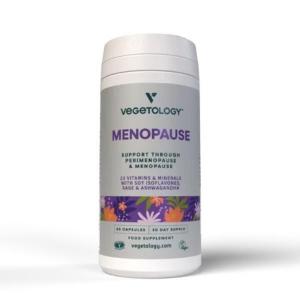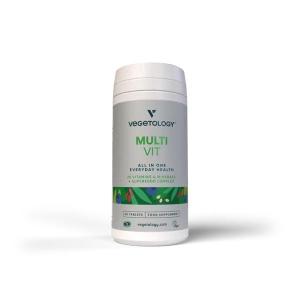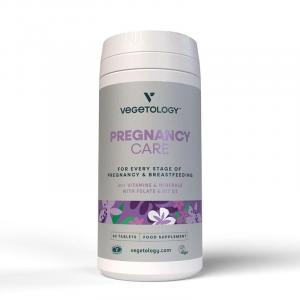
Miracles of Modern Medicine in Knee Cartilage Regeneration

Cartilage Restoration in the Knee - When Joints Cry for Help
The human body is a fascinating mechanism capable of healing, repairing, and adapting itself. However, in some cases, it needs help – and the cartilage in the knee is one area where nature faces its limits. Whether it's due to a sports injury or progressing osteoarthritis, cartilage restoration in the knee joint is a topic affecting an increasing part of the population. We are aging, but we don't want to stop running, cycling, or just squatting without pain. So what options do modern medicine and natural approaches offer today?
What is cartilage and why is it so important?
Joint cartilage is a smooth, elastic tissue that covers the ends of bones in joints – specifically in the knee, the femur, tibia, and also the patella. Its role is to enable smooth movement without friction, absorb shocks, and distribute load. All this without the presence of blood vessels, which means one crucial thing: cartilage regenerates very slowly and limitedly. Once it is damaged, the body has only a very limited ability to repair it.
What starts as mild pain while walking upstairs can gradually develop into chronic issues that limit everyday movement. It's not uncommon for people with worn cartilage in the knee to seek help only when the pain becomes constant and the joint limited in mobility. Many then hear the verdict: early-stage osteoarthritis.
How does cartilage get damaged?
There are several causes. Age, overweight, genetic predisposition, but also frequent overloading of the knees – for example, in professional athletes, dancers, or people who have worked standing all their lives. Cartilage wears out slowly, inconspicuously, and often without pain – until it's too late. Damage can also occur acutely, in case of an injury, when part of the cartilage tears or breaks off.
Lifestyle also has a significant influence. Lack of movement, unhealthy diet, smoking, and chronic stress contribute to systemic inflammation in the body, worsening regeneration. And while the liver or skin can regenerate, cartilage is more of a passive observer of changes in this respect.
Modern medicine or natural path?
In recent years, terms like biological treatment, stem cells, plasma therapy, or molecular regeneration have appeared more frequently. These methods attempt to restore damaged joint cartilage by actively intervening in the tissue structure. For example, in plasma therapy (PRP), blood is drawn from the patient, centrifuged, and then applied back into the affected joint in the form of concentrated plasma rich in growth factors. These factors can promote cell regeneration and reduce inflammation. However, it's not a miraculous solution – the effect is individual and often short-term.
Another option is stem cells, which are most commonly harvested from bone marrow or adipose tissue. These cells have the ability to transform into various tissue types – including cartilage. They are injected into the knee joint and have the potential to promote new cartilage growth. However, the method is still experimental, and significant restoration is not guaranteed.
Then there's the surgical path – from simple arthroscopic procedures to total joint replacement. But here, it's not about actual cartilage restoration, but rather mitigating the consequences of its damage. Therefore, there's increasing talk about prevention, early diagnosis, and natural methods of supporting regeneration.
Can knee cartilage be naturally restored?
The answer isn't simple. Complete cartilage regeneration as we know it in other tissues isn't yet possible in humans. But – and this is important – there are ways to support cartilage restoration and slow its degeneration.
Diet plays a key role. Cartilage is made up of collagen, proteoglycans, and water. By providing the body with quality proteins, omega-3 fatty acids, antioxidants, and micronutrients like vitamins C, D, magnesium, and zinc, we create suitable conditions for regeneration. Adequate water intake is also important – dehydration worsens cartilage elasticity and resilience.
Try our natural products
Natural supplements like glucosamine sulfate, chondroitin, MSM, or type II collagen can have a supportive effect. Research shows that long-term use can improve mobility and reduce pain. These aren't medications but tools that provide the body with the building materials for self-repair.
Movement is also crucial – but the right kind. Knees need movement to be well-vascularized and nourished. Ideal activities are non-impact ones: walking, swimming, cycling, or yoga. Regular movement also strengthens surrounding muscles, reducing joint load and improving stability.
The story of a runner who almost gave up
Martin, a 42-year-old hobby runner from Brno, injured his meniscus during training two years ago. This led to bruising and cartilage damage on the inside of the knee. "It started subtly – my knee would occasionally hurt. I thought it was overtraining. But the pain worsened until I had to stop running completely," he recalls.
After visiting an orthopedist and undergoing an MRI, the diagnosis came: cartilage damage and early osteoarthritis. Martin declined surgery and began looking for other ways. He changed his diet, started supplementing collagen and omega-3, quit smoking, and significantly reduced sugar. After consulting with a physiotherapist, he incorporated regular stability and mobility exercises for the knee. After six months, the pain diminished enough for him to return to light running. Today, he runs shorter distances, but without pain. "I wouldn't have believed that a lifestyle change could do so much," he adds.
What does science say?
Studies in recent years confirm that lifestyle has a significant impact on cartilage health. For example, research published in the Journal of Orthopaedic Research (2020) showed that a combination of fitness exercise, a diet rich in collagen, and omega-3, along with reducing inflammatory foods, can slow cartilage degeneration in patients with early osteoarthritis.
Another study from the University of Helsinki (2019) monitored the effects of collagen peptides on athletes suffering from knee pain. The results showed significant improvement in joint function and pain reduction with long-term use.
It's clear, then, that the path to cartilage restoration isn't just about injections and surgeries. It's a complex question of our relationship with our body – how we eat, move, rest, and what we put into our body.
Small steps, big changes
Cartilage restoration in the knee isn't a sprint but more of a marathon. It's not a question of one week but long-term care and patience. The good news is that the body can respond if we provide it with the right conditions. Many people, who were reliant on pain medications or even surgery, found relief through lifestyle changes, natural support, and targeted movement.
Ultimately, it's not just about the knee – but about how we treat our body. Healthy joints aren't a given, but the result of everyday decisions. And when a person is willing to listen, the body responds. As one doctor said: "Cartilage may not speak, but it can cry out for help very loudly."




